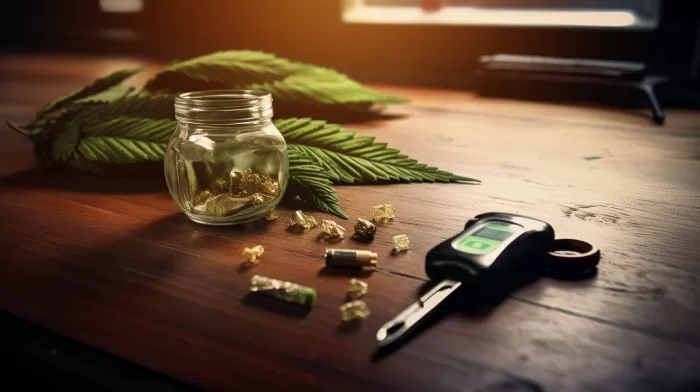Marijuana may be viewed as a relatively harmless drug, but it has the potential to turn deadly. As the conversation around legalizing cannabis continues, it’s essential to explore the risks involved – specifically, the dangers behind the wheel. Research has shown that drivers under the influence of marijuana, or other drugs, are increasingly involved in fatal car accidents.
The Study: Marijuana and Car Accidents
Researchers from Columbia University’s Mailman School of Public Health analyzed toxicological testing data from the National Highway Traffic Safety Administration’s Fatality Analysis Reporting System to examine the influence of drugs and alcohol on fatal car crashes. The study covered a period between 1999 and 2010 and focused its analysis on six states that routinely perform toxicological tests on drivers involved in fatal car accidents: California, Hawaii, Illinois, New Hampshire, Rhode Island, and West Virginia.
Out of 23,591 drivers killed in the accidents, 39.7 percent tested positive for alcohol, and 24.8 percent tested positive for other drugs. While the alcohol results remained stable throughout the 11-year period, non-alcohol drugs saw a significant increase of 16.6 percent in 1999 to 28.3 percent by 2010. In terms of marijuana, the rates nearly tripled, rising from 4.2 percent in 1999 to 12.2 percent in 2010.
Public Health Risks
The impact of drugs on traffic fatalities has been understudied, according to Guohua Li, one of the researchers involved in the study. He emphasized the importance of understanding the role of controlled substances in motor vehicle crashes, particularly given the increased availability of marijuana and the ongoing opioid epidemic.
Driving under the influence of marijuana can cause impaired judgment, slower reaction time, and difficulty concentrating. Furthermore, combining marijuana with other substances, like alcohol or prescription medications, can have even more devastating effects on driving ability.
Creating Awareness and Implementing Solutions
While many drivers are aware of the dangers of driving under the influence of alcohol, there is a significant lack of knowledge regarding the risks associated with driving under the influence of marijuana and other drugs. To address this issue and improve public safety, several steps can be taken.
Education and Public Awareness Campaigns: It is crucial to educate the public about the dangers of driving while under the influence of controlled substances. Public awareness campaigns, such as the National Highway Traffic Safety Administration’s “If You Feel Different, You Drive Different” initiative, target drug-impaired driving and aim to inform drivers on the seriousness of this issue.
Improved Drug Testing and Enforcement: Improving drug-testing methods can help identify drug-impaired drivers more effectively. The National Institute on Drug Abuse is currently working on developing new technologies, like oral fluid tests, to detect marijuana and other drugs in drivers.
Laws and Regulations: Implementing stricter laws and regulations can discourage drug-impaired driving and lower the risk of fatal accidents. Some states have already established legal limits on the amount of THC (the psychoactive component in marijuana) allowed in a driver’s blood, though there is debate regarding how to reliably determine if a driver is impaired by marijuana.
Support for Treatment and Recovery Programs: Lastly, supporting treatment and recovery programs for individuals struggling with drug addiction can help lower the overall number of drug-impaired drivers on the road. By providing resources and support, society can help pave the way for a healthier and safer future for everyone.
In Conclusion
As the conversation around marijuana legalization evolves, it’s essential to remain clear-eyed about the potential dangers posed by cannabis, particularly when it comes to driving under its influence. Addressing this issue through education, improved testing and enforcement, and support for those struggling with drug addiction can help ensure safer roads for all.



